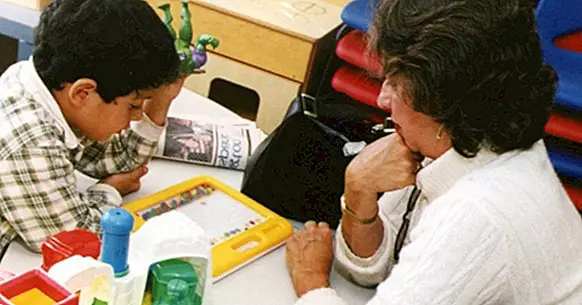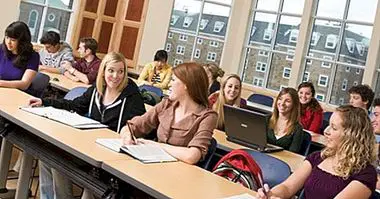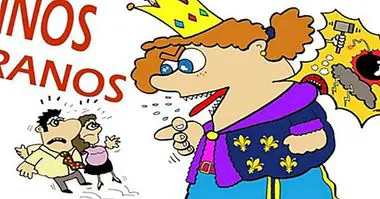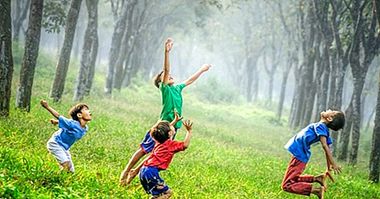Early stimulation in boys and girls: exercises by 5 stages
Both animals and humans learn by interaction with those stimuli that surrounds us. Therefore, it is logical to think that the earlier this stimulation begins and the more it is strengthened, the more possibilities to learn and improve our skills.
These are the principles that govern early stimulation . Through these activity dynamics, the abilities and abilities of children are enhanced, facilitating their physical, psychological and social development.
- Related article: "Psychology of Development: main theories and authors"
What is early intervention?
Early stimulation activities are based on a series of exercises that aim to enhance the development of the boy or girl , both intellectually, physically and socially. These practices can begin from the moment of the birth of the baby and continue practicing until 6 years of age.
It is necessary to specify that there are a series of routines or specific practices for each of the child stages, appropriate to the developmental level of age. The reason that the ideal age range to perform these exercises is up to 6 years is that until this age, the child enjoys greater brain plasticity.
The concept of cerebral plasticity refers to the ability of the nervous system to change and modify as a reaction to the interaction with the environment. This means that, through proper stimulation, our brain has the ability to create new synapses and neuronal circuits that allow it to enhance or improve the activity and performance of certain brain areas .
These exercises can be practiced both in healthy children, with the intention of enhancing their abilities, and with children with some type of disorder or condition that affects their development. In this way their compensation skills are stimulated and their physical and psychological abilities are improved.
Further, These dynamics can be carried out both within the home and in schools and day care centers specialized After a short informative period, those parents who wish may do all these exercises in the comfort of the home, thus strengthening also the affective bonds between parents and children.
The main objective of early stimulation is that, by performing a series of stimulating activities, the child develops to increase their autonomy and independence. In the same way, great advances can be made in physical, cognitive, communication skills and sensory aspect.
- Maybe you're interested: "The 4 stages of language development"
What does it consist of?
First of all, it is necessary to develop a specific plan or program for each child. This program must be adjusted to both the needs of the child, and the availability and level of involvement of parents, and household resources.
In this way, they can to gradually evaluate the progress and progress of the child according to the minimum objectives set . With an appropriate activity plan, parents can strengthen all areas of the child that interest them.
Parents should have patience, and be aware that you can not set too strict times when it comes to achieving goals because there is no pre-established time frame that dictates how and when the baby will have achieved a goal.
The most important thing is to provide the child with a series of exercises appropriate to their age, with which to work and increase their self-esteem. Gradually, the parents or those in charge of carrying out the exercises will modify the objectives of the plan according to the child's development as well as the results obtained.
The first step will always be to create an emotional and affective bond with the child, generating a space of trust in which he feels comfortable and safe to interact with us. Once this link is achieved, the adult in charge of carrying out the early stimulation can start the work of the other areas.
These areas include:
- Emotional area : development of the autonomy and independence of the child, as well as the recognition and expression of emotions.
- Cognitive area : development of the child's intellect and knowledge.
- Drive area : development of gross and fine motor skills, strengthening of muscle control and coordination.
- Social area : development of interaction skills with the environment.
- Language area : development of language expression and comprehension.
Conditions to put it into practice
It is necessary to take into account a series of aspects that will facilitate carrying out these activities.The first of this is that if the child is not in the mood or does not want to perform the activities at a specific time, he should not be pressured; since for him it must be an entertainment, not an obligation or punishment.
Likewise, as mentioned above, the exercises must be adapted to the age and abilities of the child . If we force him to do a task for which he is not prepared, we will only increase his frustration and lower his self-esteem. In the same way, if the exercises are too easy or do not suppose a small challenge for the child, this one will lose the interest in them and will decrease, therefore, the motivation.
Reinforcement by parents or professionals is very important. Congratulate the child and praise his progress It will be vitally important to maintain this interest and motivation.
Early stimulation exercises according to stage
Following the line of the rest of the article, we present a series of examples of early stimulation exercises adapted according to the child's age, as well as designed to enhance each of the development areas mentioned above.
1. From 0 to 12 months
Coarse motor: a very effective activity to work the gross motor of the baby is one that helps control the head of this. To do this, you should place the baby lying on his stomach, showing toys or flashy stimuli that force him to keep his head up .
Social development: this exercise facilitates the corporal self-knowledge and consists of placing the child in front of a mirror, in a comfortable position, so that this can begin to be recognized in him. Then, perform movements with the arms or hands to keep your attention.
2. From 1 to 2 years
Coarse motor: through this exercise we will improve the child's sense of balance. For this it is necessary to hold the child under the arms, moving smoothly from one side to the other and from front to back , allowing it to straighten by itself.
3. From 2 to 3 years
Cognitive and language area: read aloud children's stories with illustrations that the child can see Then ask simple questions about the story or let the child tell us his version of what he has understood.
4. From 3 to 4 years
Language and fine motor skills: the child will be asked to draw freely on a sheet, asking him to explain while what he is drawing . You can also draw the two together and go doing while asking about the drawings.
5. From 4 to 6 years
- Coarse motor skills: encourage the child to dance. Perform fun dance exercises It will stimulate your coordination and balance .



















